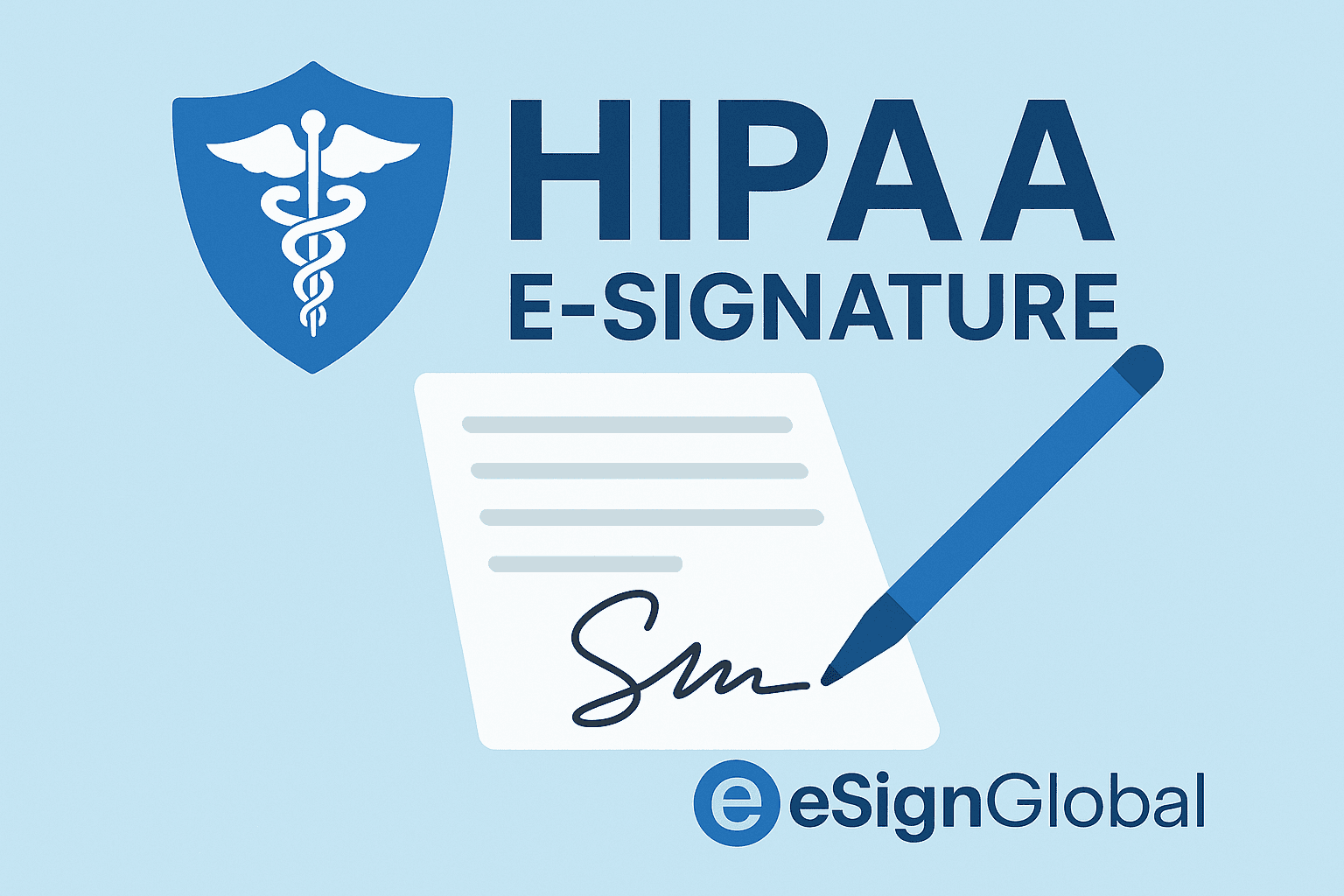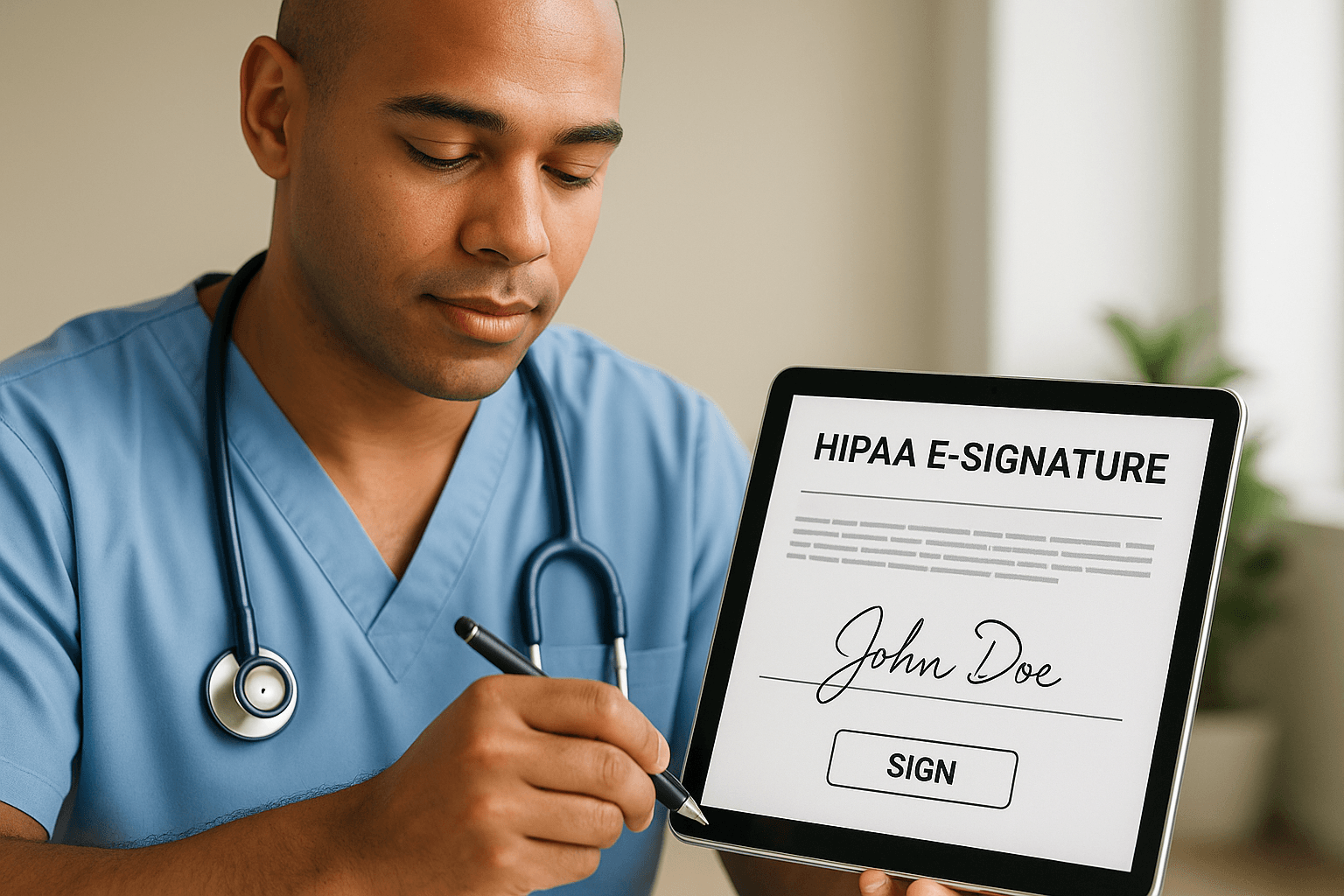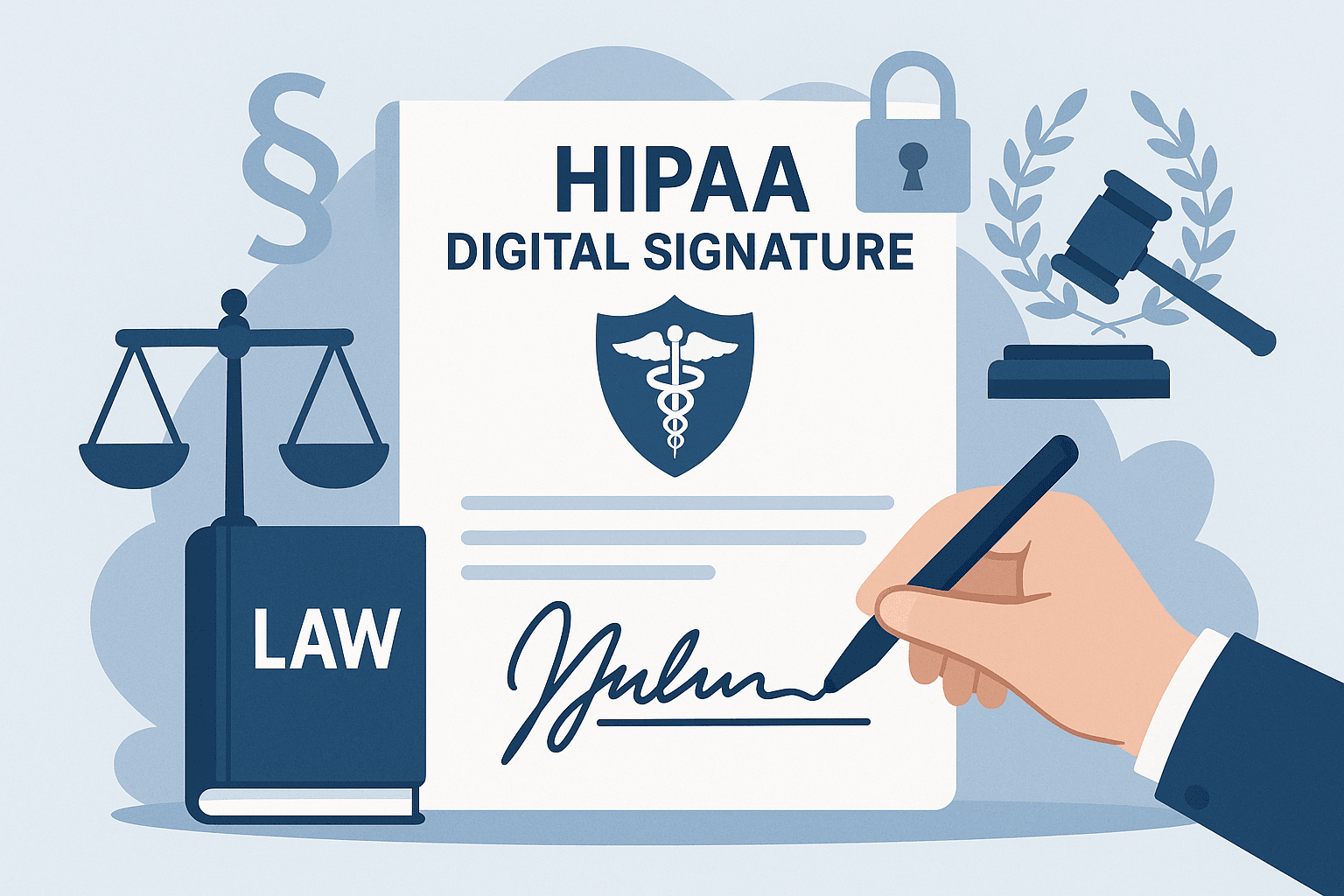WhatsApp or email with our sales team or get in touch with a business development professional in your region.
How HIPAA Compliance Shapes the E-Signature Landscape: Best Esignature Software





The demand for legally binding, secure, and efficient digital agreements is defining business agility in 2025. Nowhere is this more critical than in healthcare and insurance, where firms face unique obligations under HIPAA, the Health Insurance Portability and Accountability Act. With remote care, telehealth, and digital onboarding on the rise, electronic signatures are becoming integral—not just for convenience but for maintaining regulatory compliance and audit integrity across workflows involving protected health information (PHI).
Healthcare organizations, medical software vendors, and their legal advisors must navigate this space with a deep understanding of local regulatory definitions and accepted technologies. What makes an e-signature HIPAA compliant? How do security protocols like encryption, digital certificates, and audit logs apply? And most importantly, how do you choose the right vendor without compromising patient privacy or operational speed?

Understanding the Terminology: E-signature vs. Digital Signature
There is often confusion around the terms “e-signature” and “digital signature.” While used interchangeably in casual conversation, they serve different roles in legal and technical frameworks. An e-signature is any electronic method that indicates agreement—this could be a typed name, a scanned signature image, or a click-through mechanism. It is defined in U.S. legislation like the ESIGN Act and UETA.
Digital signatures, on the other hand, are a cryptographic subset of e-signatures. They use Public Key Infrastructure (PKI) to create unique certificates that validate the identity of the signer and ensure document integrity. For HIPAA compliance, both types can be valid, but digital signatures provide stronger enforcement and are considered a best practice when handling PHI.
Market Growth and Regulatory Convergence
The e-signature market continues its trajectory toward widespread adoption. According to recent data from MarketsandMarkets, the global e-signature solutions market is projected to reach USD 25.2 billion by 2030, up from USD 5.3 billion in 2022—an annual growth rate of over 28%. Adoption is particularly aggressive in regulated industries like healthcare, where complex compliance mandates are fueling demand.
Surveys by Statista show that over 63% of healthcare executives have introduced e-signatures across at least half of their digital processes as of 2023. This shift is driven by the need to reduce paperwork, enhance patient engagement, and streamline back-office operations—all while fulfilling compliance mandates including HIPAA, HITECH, and local equivalents across Asia-Pacific and the EU.

Core Technologies Supporting Trusted E-Signatures
Ensuring a signature is both legally recognized and secure involves a blend of technologies. HIPAA does not prescribe a specific e-signature method, but it does require procedures that ensure message integrity, signer authentication, non-repudiation, and auditability. These principles are typically enforced through:
- PKI (Public Key Infrastructure): Establishes a secure identity and encrypts content to prevent tampering.
- Audit Trails: Document every signer action with metadata including IP address, timestamp, device type, and geolocation.
- Encryption (AES-256/SHA-256): Protects documents in storage and transit.
- Access Controls and Multi-Factor Authentication (MFA): Ensure only authorized users can sign or view documents.
- Retention Policies and Timestamping: Fulfill HIPAA’s requirement for maintaining records and demonstrating compliance post-signature.
Major regulatory frameworks like the ESIGN Act (United States), eIDAS (Europe), UETA (United States), and local adaptations in Singapore, Hong Kong, and Japan are increasingly aligning in their recognition of digital signature standards—making cross-border telehealth and international compliance more streamlined but complex.
Leading E-Signature Platforms for HIPAA-Regulated Workflows
Choosing a HIPAA-compliant e-signature solution requires evaluating not just features but security, jurisdictional compatibility, and platform support. Here are seven noteworthy vendors:
-
eSignGlobal
Positioned as Asia’s digital signature innovator, eSignGlobal offers HIPAA-compliant, PKI-backed digital signing with advanced audit logs and localization in Chinese, Japanese, Thai, and Bahasa. Dedicated servers in Asia-Pacific ensure data residency, while its flexible APIs make it a powerful alternative to DocuSign and Adobe Sign for healthcare start-ups and MNCs expanding into Asia. -
DocuSign
A market leader based in the U.S., DocuSign supports HIPAA configurations through Business Associate Agreements (BAAs), rigorous access controls, and pre-built compliance templates. It remains the go-to solution for American healthcare providers and insurers but may cost more for international deployments. -
Adobe Sign
Integrated within the Adobe ecosystem, Adobe Sign complies with HIPAA upon request with BAAs. It excels in organizations already using Creative Cloud or Experience Manager, with robust identity verification options and integrations with Microsoft 365 and Salesforce. -
HelloSign (Dropbox Sign)
Focused on startups and SMBs, HelloSign is easy to deploy and customize. While it offers HIPAA compliance, its lack of advanced workflow automation and region-specific storage options can be a limitation for large enterprises. -
PandaDoc
A strong fit for sales and contract-heavy environments, PandaDoc’s offering includes document generation, eSignature, and CRM integrations. HIPAA compliance is available on certain plans but requires contacting their enterprise team. -
SignNow
Affordably priced and straightforward, SignNow provides HIPAA capabilities with less complexity. Its mobile experience and offline signing make it attractive for field-based healthcare workers or insurance adjusters. -
Zoho Sign
Part of the Zoho ecosystem, Zoho Sign supports customizable workflows and automation. HIPAA compliance is available on enterprise plans, with audit chains and region-specific storage as part of its core offering.

Different Needs Across Business Sizes and Regions
Healthcare startups, multi-site clinics, and multinational insurers have diverse e-signature requirements. A small tech-enabled clinic in Taipei may prioritize low-latency signing with localized language support, while a U.S.-based Medicare provider prioritizes FedRAMP certification and native Salesforce integration.
For example, a mid-sized diagnostic lab in Bangkok adopted eSignGlobal and reported a 40% increase in turnaround time for lab contracts and non-disclosure agreements. The ability to sign in Thai language, coupled with cloud storage hosted in-country, was critical to meeting both client comfort and legal governance.
Large hospital networks might need advanced role-based workflows, while biotech firms with EU operations may find eIDAS QTSP support essential. The choice hinges on factors like:
- Jurisdiction and data residency needs
- Need for role-based routing versus simple signing
- Availability of BAAs for HIPAA recognition
- Integration with EHR platforms (Cerner, Epic, etc.)
- Support for biometric and multi-factor authentication
Trust Is the Cornerstone of Compliance
Implementing e-signatures in healthcare isn’t just a technical decision—it’s a governance strategy. With regulators tightening enforcement and cyber-threats evolving, enterprises must balance agility with defensible compliance documentation. The right e-signature partner enables not just secure transactions but provable integrity, ensuring that authorizations around PHI can withstand audit scrutiny.
As healthcare enters a more digitized, decentralized future, the organizations that succeed will be those that embed compliance into their tech stack without sacrificing operational efficiency. Solutions like eSignGlobal show that innovation can flourish without compromising local data laws or privacy mandates.
In regulated environments like APAC’s healthcare sector, trust is built through encryption, compliance rigor, and seamless usability—and in this arena, e-signatures are no longer a feature, but a foundational backbone.

Shunfang
Head of Product Management at eSignGlobal, a seasoned leader with extensive international experience in the e-signature industry.
Follow me on LinkedIn
Get legally-binding eSignatures now!
30 days free fully feature trial
Business Email
Get Started
 Only business email allowed
Only business email allowed
Latest Articles


